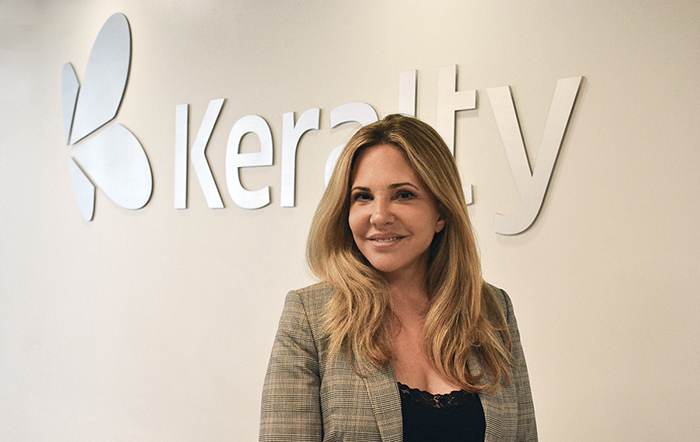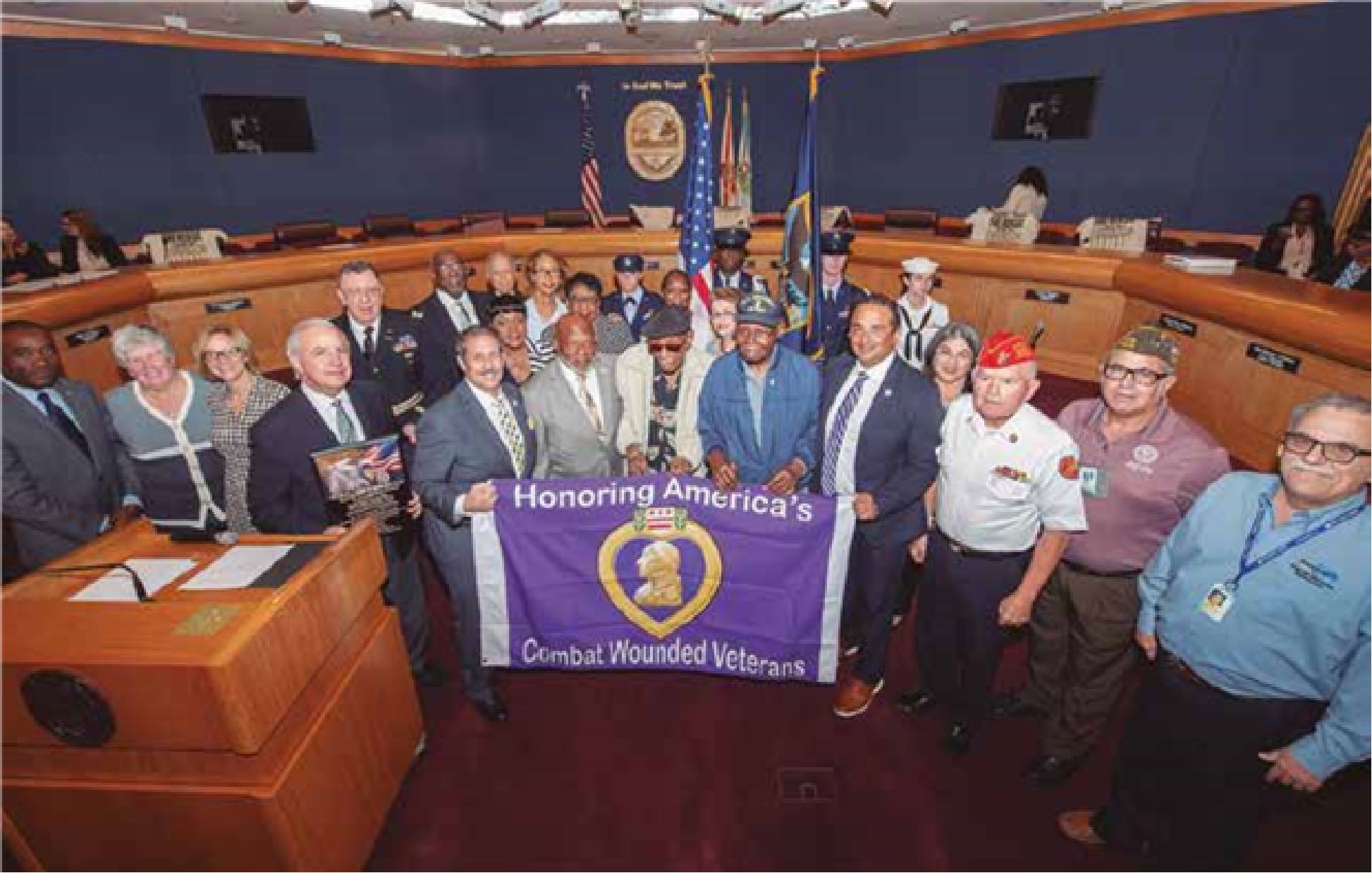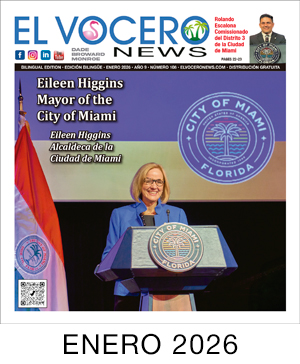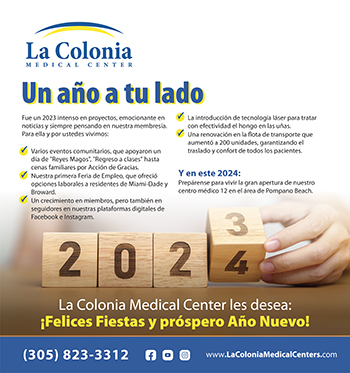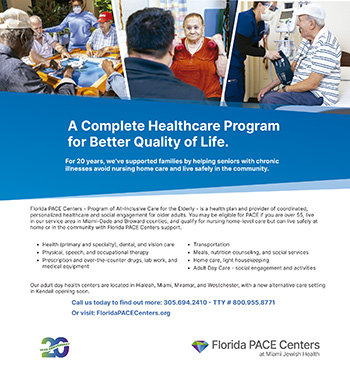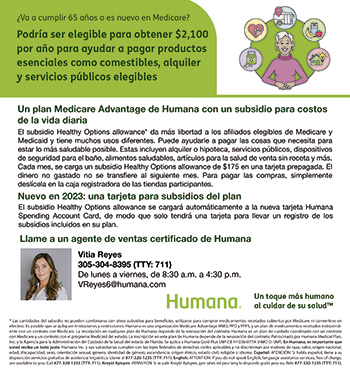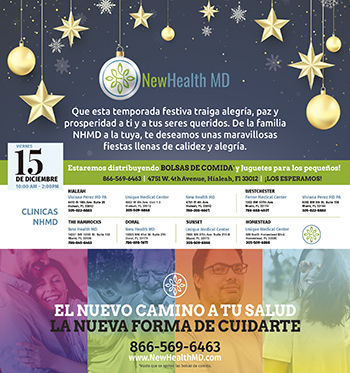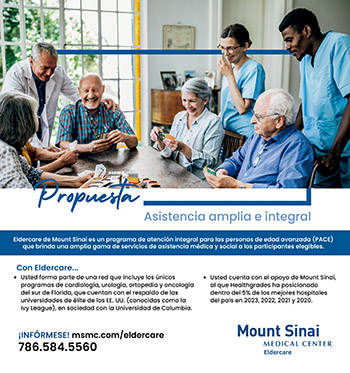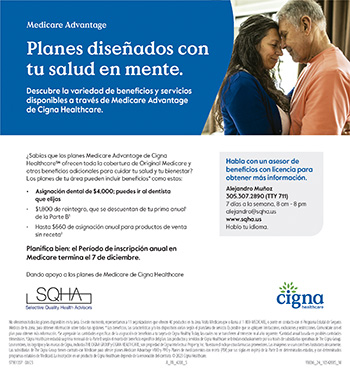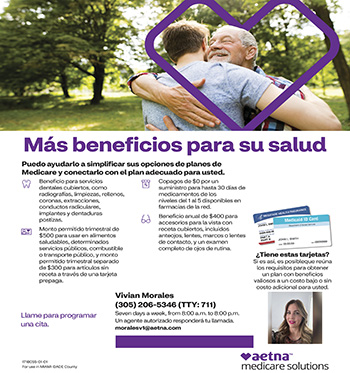By Jesús Hernández
Keralty Hospital, formerly known as Westchester Hospital, began a new era in 2020, and Chief Medical Officer Aimee Gonzalez oversees and manages the organization’s medical and clinical aspects to ensure the delivery of high-quality patient care while aligning medical strategies with the overall business objectives.
Graduated from the University of Miami and Universidad Eugenio Maria de Hostos, with over 25 years of outstanding experience, Dr. Gonzalez works for the company’s efficiency and quality of medical services.
– What is your vision regarding the hospital’s expansion?
The goal of Keralty Hospital is to establish a community hospital with programs that reach out to all and gather resources for our patients to make their lives easier. Like care at home, hospital at home, transitional care, where we meet people where they live. The idea is to go out and keep patients at home where they have their support network, where they have the food that they like, where they have their children, their parents, and they feel safest. And when they absolutely need to come to the hospital, then we’re here for them. The good thing about being a small community hospital is there’s a lot of communication. I’m right here. Everybody is here. I have an open-door policy. If anyone has a problem, they can come right in, and we will try to resolve it. We’re trying to change the way healthcare is seen here. It’s not the size of the hospital, it’s the energy. It’s the energy we have.
-Being a Chief Medical Officer requires you to be both an administrator and a physician. Tell us a little about your typical day.
Yes, I’m a physician and I’m administrative. So, I must look out first and foremost for the patient. Secondly, I must make sure that I look out for the best interests of the doctor. And ultimately for the hospital to succeed because without a hospital, everyone loses from the patients to the doctors to the nurses. My typical day starts with reviewing everyone that’s been admitted to the hospital overnight to make sure that everyone is safe, everyone’s gotten what they needed, that no one has any complaints, that we’re appropriately staffed, that none of the physicians have any difficulty that day. Then I meet with my administrators to make sure that I am addressing all the concerns that they have. And then we have meetings regarding budgeting, staffing, ratios, census, volume, strategy. I meet with my marketing personnel to make sure that we’re presenting a face to the community that represents our values and finding other ways to reach into the community. I also see patients. I’m also involved very heavily in the family medicine residency program, so I teach, I give conferences, and I make sure that they’re up on the latest developments, that they are being taught by the right people, and that they are progressing in their educational experience.
-As Chief Medical Officer, what are your current priorities at Keralty Hospital?
My first priority is to keep the hospital safe for our patients. It’s to make sure that we follow a high standard of care and that we offer the services that we need to offer. And that every patient that has been admitted gets the appropriate care at the appropriate time. We make sure that we have doctors that have the same philosophy as the hospital, which put their patients first, that are highly qualified to do the procedures that they are doing in the hospital. We’ve expanded services since we acquired it, including interventional radiology. We have an intensivist. We have a hospitalist. We’ve added a gastroenterologist. We’ve added cardiology. We are trying to attract those physicians that give the best care for our patients.
-Let’s say one of the physicians on your medical team has made a serious diagnostic error. How would you manage it?
I discuss it with a physician and then it goes to what we call a peer review. Peer review is when everyone gets together and sees what the problem was, how we can change it to get better care, what happened, what circumstances were specific to that situation, and we come up with a solution based on the bylaws for the hospital.
– What do you see as the biggest challenge to ensure the delivery of high-quality patient care?
Healthcare has changed a lot since the COVID pandemic. People’s view of hospitals has changed since the pandemic. People try to avoid the hospitals. So that’s why we pivoted as a small hospital. We’re very flexible. We recognize that people don’t want to come to the hospital, so we must go to them. So, the biggest challenge is offering other ways to access care. Telemedicine is a big one. Transitional care is another one. Care at home is another one. So, offering all those services is especially important.
-Small hospital, lot of energy
We have 127 beds, 27 of them are inpatient psychiatric beds. We have inpatient therapy. We have outpatient therapy. We do a lot of things to make sure that the patients continue to be well after we discharge them. We also have about 1,500 students that come through here every year, and they have to be taught as well. I have to join them with the preceptors, the specialists in the area, and as well as in the hospital, make sure that they have educational experiences that enrich their education and acceptance into residency eventually. And I do the interviewing for the residency program. It’s a rewarding job, and I love it. We make such a difference to a lot of people and people are very thankful.
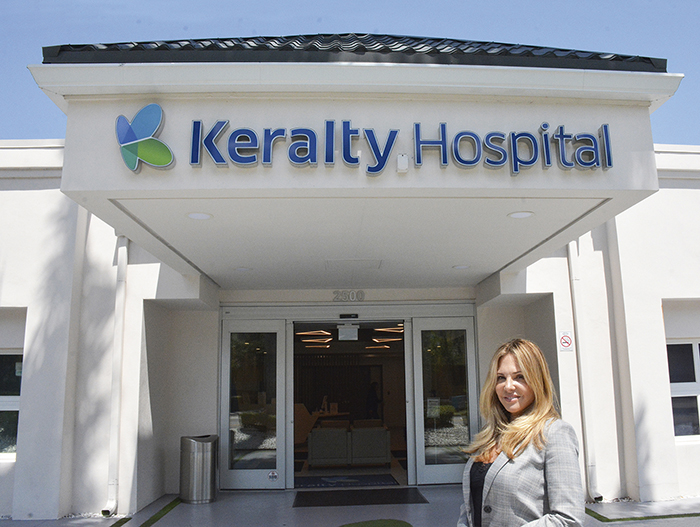
Dra. Aimee González, estrategias médicas y objetivos generales
Keralty Hospital, antes conocido como Westchester Hospital, comenzó una nueva era en 2020 y la directora médica Aimee González supervisa y gestiona los aspectos médicos y clínicos para garantizar atención al paciente al mismo tiempo que alinea las estrategias médicas con los objetivos generales de la institución hospitalaria.
Graduada de la Universidad de Miami y la Universidad Eugenio María de Hostos, con más de 25 años de destacada experiencia, la Dra. González trabaja por la eficiencia y calidad de los servicios médicos de la empresa.
– ¿Cuál es su visión respecto a la ampliación del hospital?
El objetivo de Keralty Hospital es establecer un hospital comunitario que recopile recursos y provea programas que lleguen a todos y hagan que la vida de los pacientes sea más fácil. Como atención en el hogar, hospital en el hogar, atención de transición, así conocemos a las personas donde viven. La idea es mantener a los pacientes en casa donde se sienten más cómodos en su entorno natural, donde tienen la comida que les gusta, donde tienen a sus hijos, a sus padres y se sienten más seguros. Y cuando es absolutamente necesario que vengan al hospital, estamos aquí para ayudarlos. Lo bueno de ser un hospital comunitario es que hay mucha comunicación. Aquí estoy. Todos estamos aquí. Tengo una política de puertas abiertas. Cualquiera que tenga un problema puede venir directamente a mi e intentaremos resolverlo. Estamos tratando de cambiar la forma en que se ve la atención médica. No es el tamaño del hospital lo que cuenta, es la energía. Es la energía que tenemos.
-Ser directora médica requiere ser tanto administradora como médica. Cuéntenos un poco sobre su día cualquiera en el trabajo.
Sí, soy médica y soy administrativa. Debo preocuparme ante todo por el paciente. En segundo lugar, debo asegurarme de velar por los mejores intereses del médico. Y que el hospital tenga éxito porque sin un hospital todos perdemos, desde los pacientes hasta los médicos y las enfermeras. Mi día típico comienza revisando a todos los que han sido admitidos en el hospital durante la noche anterior para asegurarme de que todos estén seguros, que todos hayan recibido lo que necesitan, que nadie tenga quejas, que tengamos el personal adecuado y que ninguno de los médicos tenga dificultad alguna. Luego me reúno con mis administradores para asegurarme de que estoy abordando todas las inquietudes que tienen. Y luego tenemos reuniones sobre presupuesto, dotación de personal, proporciones, censo, volumen, estrategia. Me reúno con mi personal de mercadeo para asegurarme de que comunicamos bien los valores que tenemos, al mismo tiempo que buscamos otras formas de llegar a la comunidad. También veo pacientes. También estoy muy involucrada en el programa de residencia en medicina familiar, así que enseño, doy conferencias y me aseguro de que estén al tanto de los últimos avances médicos, que sean enseñados por las personas adecuadas y que progresen en sus conocimientos.
-Como directora médica, ¿cuáles son sus prioridades en el Hospital Keralty?
Mi primera prioridad es mantener el hospital seguro para nuestros pacientes. De asegurarnos de que seguimos un alto nivel de atención y de que ofrecemos los servicios que necesitamos ofrecer. Y que cada paciente que ingresa reciba la atención adecuada en el momento adecuado. Nos aseguramos de tener médicos que compartan la filosofía del hospital, que pongan a sus pacientes en primer lugar, que estén altamente calificados para realizar los procedimientos que realizan en el hospital. Hemos ampliado los servicios desde que lo adquirimos, incluida la radiología intervencionista. Contamos con un intensivista. Contamos con médicos propios. Hemos agregado un gastroenterólogo. Hemos agregado cardiología. Estamos tratando de atraer a médicos que brinden la mejor atención a nuestros pacientes.
-Digamos que uno de los médicos comete un error de diagnóstico grave. ¿Cómo manejaría el caso?
Lo hablo con el médico y luego pasamos revisar el caso con arbitraje. La revisión por pares es cuando todos se reúnen y ven cuál fue el problema, cómo podemos cambiarlo para obtener una mejor atención. Qué sucedió, qué circunstancias específicas conllevaron a esta situación y sí encontramos una solución basada en los estatutos del hospital.
– ¿Cuál considera que es el mayor desafío para garantizar la prestación de atención al paciente de alta calidad?
La atención sanitaria ha cambiado mucho desde la pandemia de COVID. La visión de la gente sobre los hospitales ha cambiado desde la pandemia. La gente intenta evitar los hospitales. Por eso somos un pequeño hospital. Somos muy flexibles. Reconocemos que la gente no quiere venir al hospital y por eso debemos acudir a ellos. El mayor desafío es ofrecer otras formas de acceder a la atención. La telemedicina es muy importante. La atención de transición es otra. El cuidado en casa es otro. Por eso, ofrecer todos esos servicios es especialmente importante.
-Hospital pequeño, mucha energía.
Contamos con 127 camas, 27 de ellas son camas de internación psiquiátrica. Contamos con terapia hospitalaria. Contamos con terapia ambulatoria. Hacemos muchas cosas para asegurarnos de que los pacientes sigan estando bien después de darles el alta. También tenemos alrededor de 1.500 estudiantes que vienen aquí cada año, y a ellos también hay que enseñarles. Tengo que acompañarlos con los preceptores, los especialistas del área y así como en el hospital, asegurarme de que tengan experiencias educativas que enriquezcan su educación y eventualmente su aceptación a la residencia. Y hago las entrevistas para el programa de residencia. Es un trabajo gratificante y me encanta. Hacemos una gran diferencia para mucha gente y la gente está muy agradecida.

